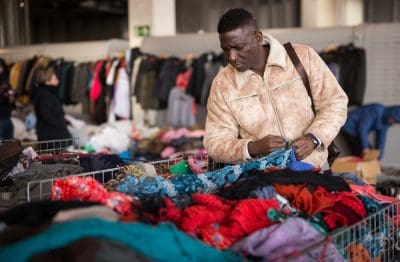In today’s relentless chase for the newest and most cutting-edge products, an unexpected trend has taken root among the elite circle of millionaires: their affinity for purchasing secondhand goods. It’s a trend that defies the conventional association between affluence and the pursuit of exclusively pristine, brand-new possessions. These individuals aren’t just bargain-hunting; they’re reshaping the narrative around consumption by recognizing a profound truth that distinguishes them — they perceive “used” not as a compromise but as a parallel to “new” in various essential ways.
This shift in mindset among the wealthy challenges the traditional concept of conspicuous consumption. Instead of fixating solely on the novelty of items, these savvy individuals embrace the value embedded within previously owned possessions. Their approach isn’t merely about financial prudence; it’s a reflection of a broader philosophy that intertwines fiscal wisdom, sustainability and a redefined perspective on wealth.
At the forefront of this trend is a mindset shift that challenges conventional consumerism. Instead of chasing after brand new products, these savvy individuals recognize the inherent value in previously owned items. This shift isn’t merely about saving a few dollars; it’s about embracing a mindset that combines financial wisdom, sustainability and a unique perspective on wealth.
Understanding the psychology behind this behavior unveils a multifaceted approach adopted by millionaires when it comes to their purchasing habits. First and foremost, the financial aspect plays a pivotal role. While they might have the means to afford new luxury items, they comprehend the economic advantages of buying used. By opting for pre-owned goods, they not only save substantial amounts of money but also allocate their resources intelligently.
Moreover, the concept of “newness” for these individuals extends beyond the tangible condition of an item. They perceive value beyond the packaging and showroom shine. Instead, they appreciate the stories embedded in pre-owned possessions: the history, the character and the uniqueness that new items often lack. Whether it’s a vintage car, a rare book or a classic piece of furniture, the allure lies in its individuality and the sense of discovery that comes with it.
The environmental impact is another crucial factor. Millionaires who choose to buy used items actively contribute to reducing waste and minimizing their ecological footprint. By prolonging the lifespan of products, they participate in a sustainable cycle of consumption, promoting the ethos of “reduce, reuse, recycle” on a grand scale. This conscious decision aligns with their commitment to preserving the planet for future generations.
Furthermore, the pursuit of quality over quantity is a defining trait among these discerning consumers. They prioritize craftsmanship and durability — qualities often associated with older or previously owned goods. Rather than succumbing to the allure of fast-paced consumerism, they opt for timeless pieces that stand the test of time, a testament to their refined taste and long-term vision.
In essence, the mentality of “used is new” among millionaires is not driven solely by thriftiness but by a holistic understanding of value, one that encompasses financial prudence, appreciation for uniqueness, environmental responsibility and a preference for enduring quality.
The embrace of pre-owned items as an equivalent to new challenges the societal ethos of relentless acquisition and disposal. It invites us to question the allure of perpetual novelty and prompts a deeper contemplation of the value inherent in what already exists. This paradigm shift isn’t merely about cost-effectiveness; it’s about forging a more conscientious, sustainable and fulfilling lifestyle.
Moreover, the implications transcend the realms of personal finance. They extend to environmental stewardship, advocating for a reduced carbon footprint and a more circular economy. By extending the lifespan of goods through reusing and repurposing, we actively contribute to a healthier planet for future generations.
Whether adorned with wealth or not, the wisdom behind embracing “used as new” beckons all individuals to redefine the very essence of “newness.” It invites us to seek value beyond the shiny veneer of new purchases, fostering a mindset that treasures uniqueness, cherishes history and prioritizes enduring quality.
In this evolving landscape, adopting a more thoughtful and intentional approach to consumption becomes an avenue not just for personal fulfillment but for shaping a more sustainable and harmonious world. The time has come for everyone to contemplate the profound wisdom encapsulated in the simple act of buying used and reimagine what “new” genuinely entails.
This story was created using AI technology.

















